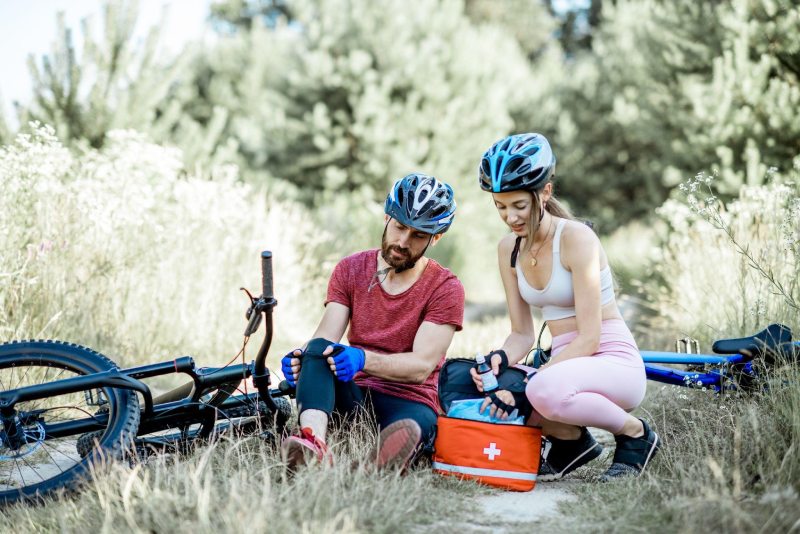
Sports-related injuries are a significant worry for athletes and weekend warriors. The risk of injury increases as we push our physical strength to its limits. Knowing the importance of preventing injury as well as how to repair damage is critical to continuing in sports activities and achieving top performance. Here, physical therapy experts from Team Rehabilitation Services discuss the various ways to prevent sports-related injuries.
The first step is understanding the potential risks of specific activities. Each activity has risks, like overexertion, muscle strains, sudden impact, and fractures.
Because of these risks, active people need to prioritize warm-up and cool-down routines. These prepare muscles and joints for intense activity and help them recover afterward. Stretching before and after workouts can improve flexibility and reduce the chance of damage.
It’s important to recognize when to rest and let your body recover. Ignoring pain or fatigue can worsen existing conditions and cause more damage. By taking rest periods between training sessions and listening to your body, you can avoid overuse injuries and stay at peak performance.
A study showed that athletes who had physical therapy had a 41% lower risk of new injuries.
Injury prevention is vital for athletes. Always wear the proper protection for your sport – but also pay attention to your form and technique. Warm up right, be aware of posture, and increase intensity slowly. Listen to your body: don’t ignore aches and pains. Rest when needed and get professional help from a physical therapist.
Warm-up and stretching techniques are an important part of preventing injuries. They help prepare your body for exercise and promote flexibility and mobility. Here are three important injury prevention practices:
If you are unsure what warm-ups, stretches, or post-exercise treatments are best for you, consult a Team Rehabilitation Services physical therapist.
In addition to proper warm ups, cool downs, and muscle care, Team Rehabilitation Services pointed out that proper equipment and safety gear are necessary for avoiding injuries. The proper equipment can help lessen the risk.
Athletes should also make sure their gear is well-maintained and inspected to identify potential problems before they occur.
Equipment and safety gear fitting is as important as the equipment itself. Poorly fiting gear can impede movement and compromise an athlete’s safety. It’s essential to take the time to fit each piece of equipment properly. Consult your physical therapist if you are uncertain of the proper fit.
Charles Barkley’s knee injury serves as a reminder to prioritize wearing the proper safety gear. He got hurt in a basketball game because he wasn’t wearing protective knee pads.
Athletes must understand the importance of proper equipment and safety gear. Investing in quality gear is an investment in your long-term health and your athletic success.
Training and conditioning with safety in mind is critical to avoiding sports-related injuries. Athletes must employ damage prevention strategies in order to stay safe and perform at their best. In doing so, they can reduce the risk of injury and avoid any delays in their training or competitions. Here are some tips:
Implementing these techniques can improve your performance while keeping you injury-free.
Furthermore, different sports have individual injury risks and prevention methods. For instance, soccer players must work on agility and balance to prevent ankle sprains, while basketball players should focus on strengthening their knee joints to avoid ACL tears.
To ensure that your training is successful, athletes should consult health professionals or sports medicine experts for tailored guidance based on their needs and objectives. Physical therapists can guide you in proper warm ups, stretches, equipment fitting, and improving strength and flexibility.
Should you suffer an injury or experience pain, Physical Therapy is a primary method of recovery. It incorporates exercises and stretches to boost the range of motion, strengthen muscles, and ease discomfort. Physical therapy also includes massages and joint mobilization in order to ease tension, improve circulation, and reduce inflammation.
Treatments that include modalities, like heat therapy, cold therapy, ultrasound, electrical stimulation, functional dry needling, blood flow restriction and laser therapy, can help tissue repair and minimize pain. Injury-specific exercises target muscle imbalances that may be linked to the damage.
Functional Training programs simulate real-life movements and tasks to gain strength, stability, and coordination. Based on individual needs, gradual progression back to your normal activity is critical for avoiding reinjury.
Using braces or taping can also give extra support to healing muscles and joints.
For optimal effectiveness, consistent physical therapy and diligent home exercise programs are essential. Talking to your healthcare team about any changes in your symptoms is important. Proper nutrition and rest aid tissue repair, fight inflammation, and help to heal. Following these suggestions helps athletes with their recovery and decreases future injuries.
Your physical therapist and Team Rehabilitation Services can be extremely beneficial in repairing or preventing and injury. Schedule your appointment today.
Swiss International University (SIU) is on track to be one of the world's most respected… Read More
In a session that left students buzzing with fresh ideas and practical insights, Invertis University… Read More
At the 21st Shanghai International Automobile Industry Exhibition, which is surging with the wave of… Read More
Liverpool, UK—House of Spells and Comic Con Liverpool are once again collaborating to bring the… Read More
Introduction In India's booming EdTech space, there's one name that's making waves among Telugu students… Read More
In litigation, often, the difference between winning and losing comes down to strategy. Although facts… Read More